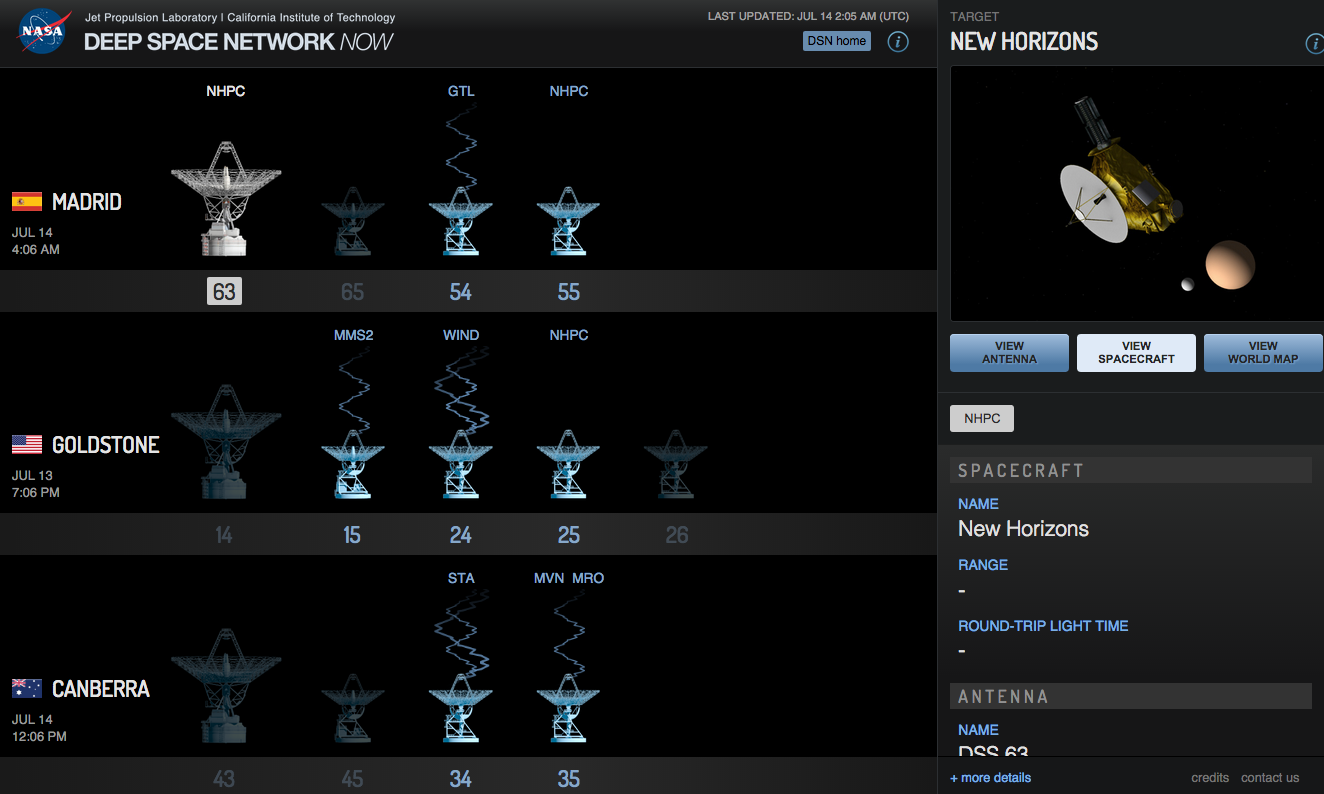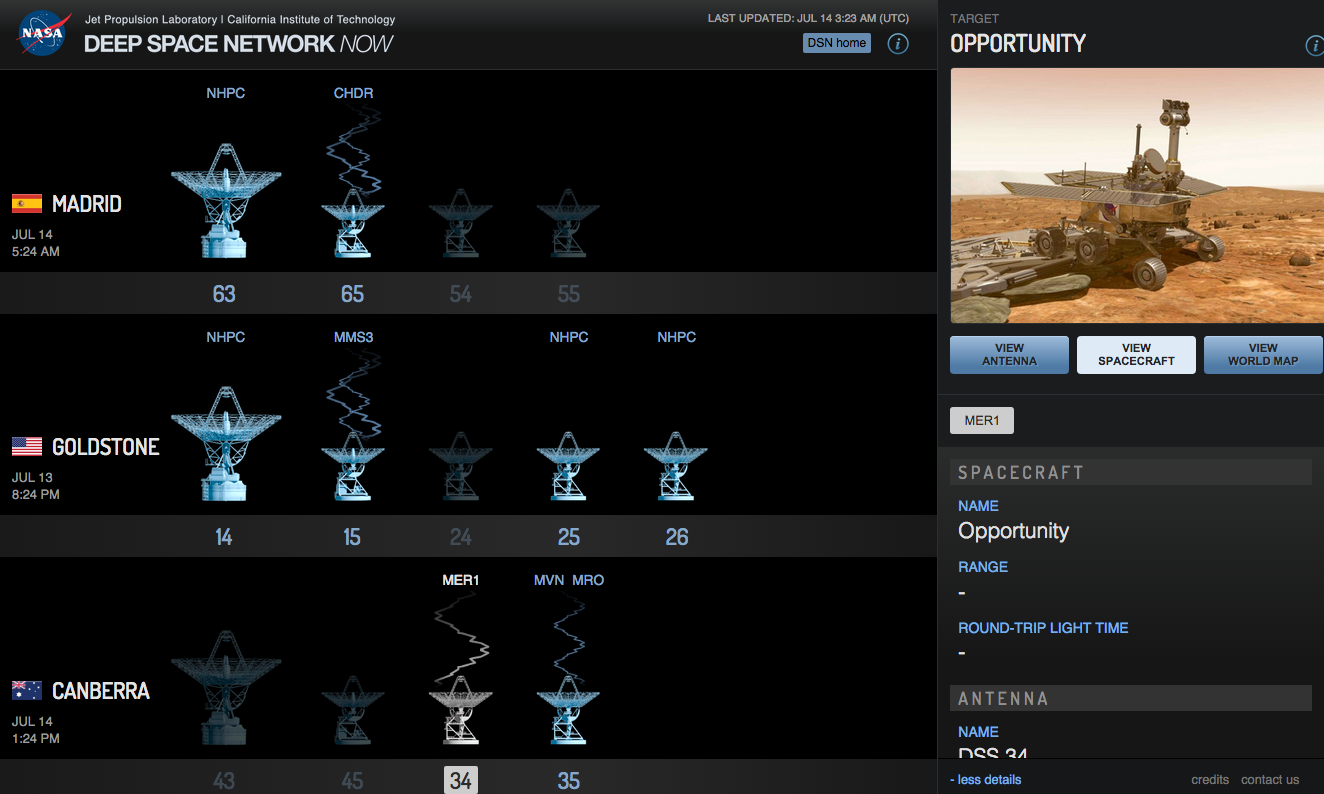So New Horizons is long since gone from Pluto. But it will still take 16 months to send back all the photographs and science. Why so long? Because so far away. 3 billion miles away. Put another way, light from the sun takes eight minutes to reach Earth as it travels at, well, the speed of light. Radio signals that travel at the speed of light take 4.5 hours to reach Earth from Pluto. So imagine trying to send large data files that far away at a download speed less than that of a 56k modem, for those of you old enough to remember such a thing.
But what receives these radio signals? NASA’s Deep Space Network of antennae that allow NASA to communicate with spacecraft and such things that are in, wait for it, deep space. These antennae are scattered throughout the world, but in this screenshot taken Monday, you can see just what the antennae at the various complexes are doing. Here, we see New Horizons (NHPC) just prior to its flypast communicating with the large antenna at the Madrid complex. The lack of signal lines indicates that it is preparing to setup, takedown, or is tracking the spacecraft.

As a fun aside, I left the tab open in the browser and a few hours later came back to find the Deep Space Network sending signals to the Mars rover Opportunity (MER1), the Chandra X-Ray Observatory (CHDR), and the Mars Reconnaissance Orbiter (MRO) amongst others.

Credit for the piece goes to the NASA graphics department.
